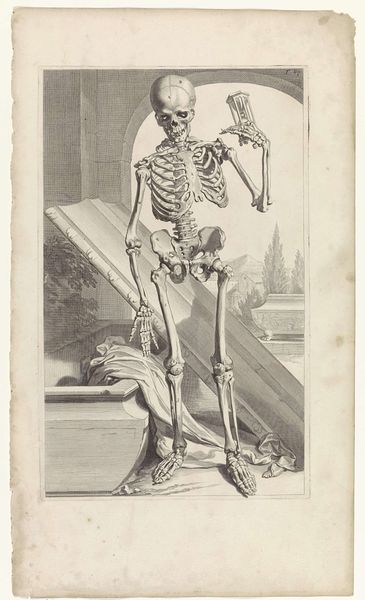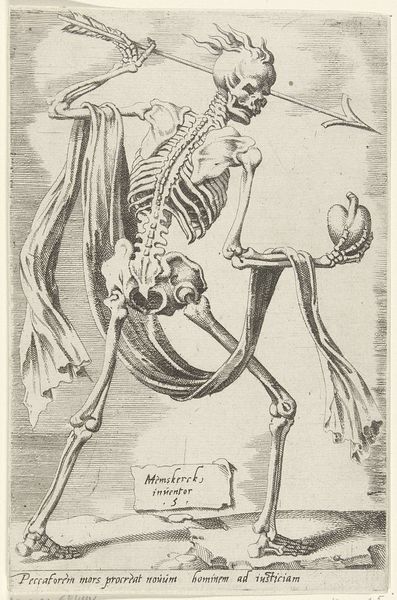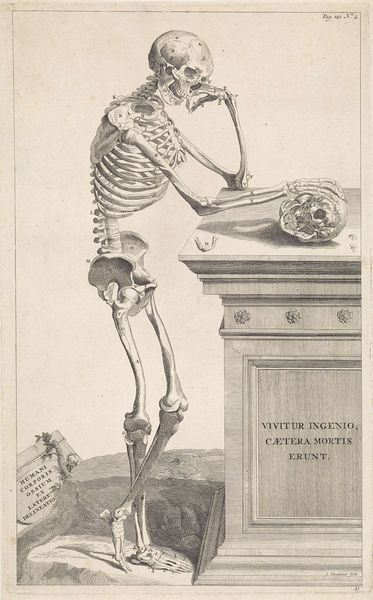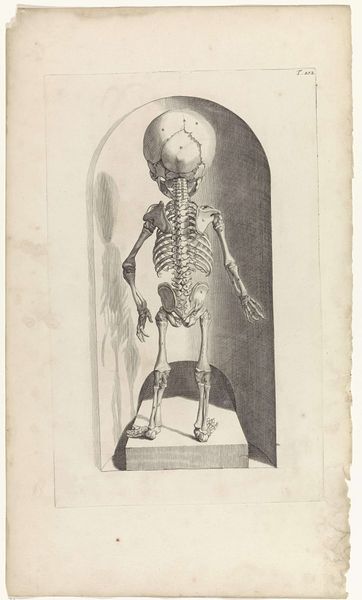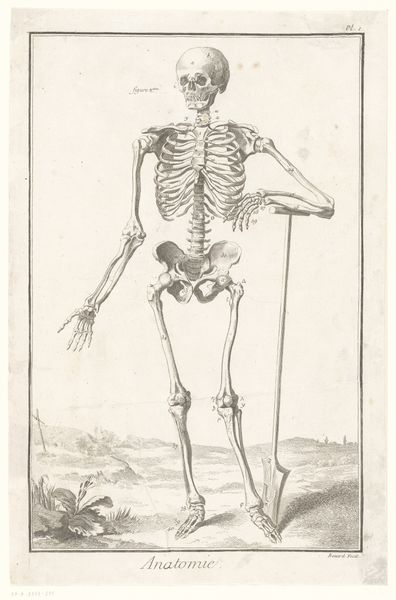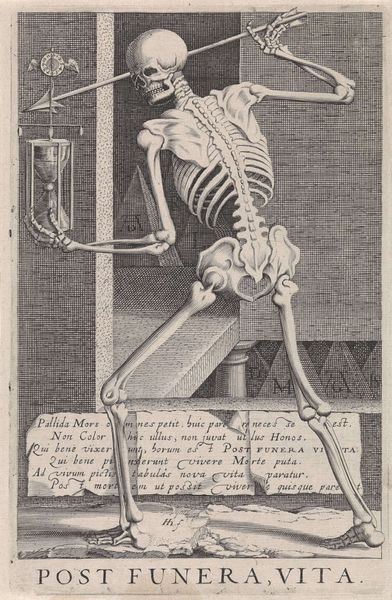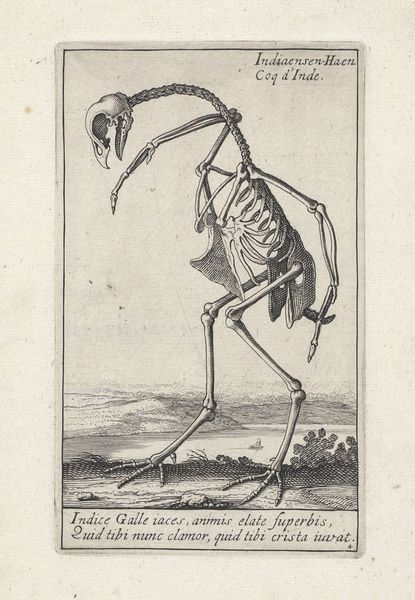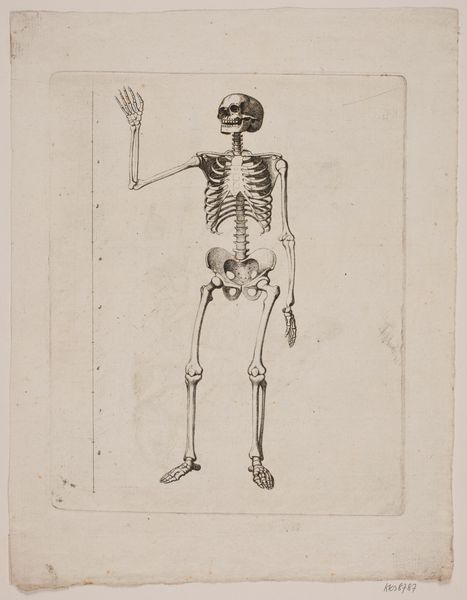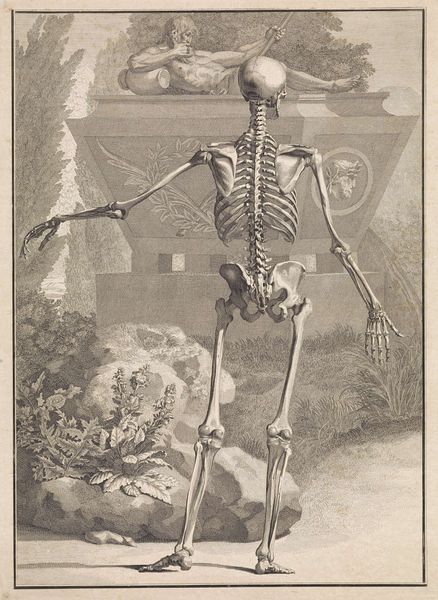
print, engraving
#
portrait
#
baroque
# print
#
figuration
#
history-painting
#
academic-art
#
engraving
Dimensions: width 275 mm, height 441 mm
Copyright: Rijks Museum: Open Domain
Curator: Pieter van Gunst's "Anatomical Model of a Human Skeleton," created around 1685, presents a rather striking image. Editor: My immediate reaction is one of somber elegance. The precision of the engraving combined with the classical setting gives the skeletal figure a sense of contemplative grace, despite the morbid subject matter. Curator: Indeed. The piece exemplifies the academic art tradition through the skillful rendering of anatomical detail. The formal elements – line, tone, and composition – converge to create a powerful memento mori. Note the precise articulation of each bone. Editor: But let's consider the means of its production. The print, an engraving, suggests a wide distribution. It raises questions about access to medical knowledge in the late 17th century, and for whom were such detailed images created? How did this engraving circulate through society, shaping understanding—and perhaps anxieties—surrounding the body and mortality? Was it meant for instruction or purely contemplation? Curator: A crucial question. The image works on multiple levels. It appeals to both scientific and artistic sensibilities. The use of chiaroscuro creates depth, highlighting the interplay of light and shadow across the bones and drapery. We see this used with the column capital beside the skeleton to create a strong illusion. It invites the viewer to appreciate the underlying structure and geometry inherent in human form. Editor: It speaks volumes about the societal gaze on mortality. This piece likely reveals more about attitudes toward the body and scientific exploration. The level of craft involved elevates this scientific illustration beyond mere representation. There's clearly artistry at play, manipulating the medium of engraving for expressive impact, not just factual documentation. Curator: I agree entirely. This isn't simply a dry anatomical study. Van Gunst masterfully elevates the genre through formal innovation. He integrates visual, intellectual and spiritual elements. Editor: Seeing how process shapes both production and reception shifts this image beyond a simple document, inviting us to reflect on its journey from creation to our present viewing. Curator: It underscores how even the most functional image can transcend its original intent through skillful artistry. Editor: Yes, a fine display of embodied understanding turned to tangible rendering and the social implications thereafter.
Comments
No comments
Be the first to comment and join the conversation on the ultimate creative platform.
